
Driving and Motosport
For most of us, driving is simply a function of our day to day lives, a means to an end we attempt to negotiate without incident or mishap.
We don’t do anything particularly exciting or out of the ordinary, and yet despite the traffic, restrictions, and lack of respect from other drivers, we generally still find the experience enjoyable.
Most drivers still take pleasure in simple act of getting behind the wheel and going somewhere at their own convenience. Granted it would preferable it if there were fewer cars on the road, but for most of us it doesn’t seem to matter too much.
Further still, there are those that find it an enjoyable enough activity that we make a pass time out of it, as a form of entertainment and as an activity.
Motorsports are watched and enjoyed by millions of people, and some of those go even further to get some track time for themselves. It seems no matter the obstacles, people can’t get enough of driving.

For the Fun of it
Most of us like to think we’re great drivers, and would secretly enjoying knowing where we rank in the great lap time list of the world. On a nice open stretch of road with no one else around it feels good to let loose a little, while yearning for a track day experience to test and improve our skills.
Whether we are great or not, there’s no harm in improving on the basics of handling and control, or the efficiency of changing through gears and timing those changes for maximum efficiency. Or even slightly more advanced concepts like engine braking, torque steering, left foot braking and double clutching.
It all adds to the experience of driving. Driving represents freedom, a freedom of destiny, which is something that seems increasingly less readily available in today’s world.

Day to Day
Around 1.2 billion vehicles currently reside on planet earth, of which almost 34 million of them are in the UK. This puts it at nearly three times the global average number of vehicles per person - like most European nations – but well short of the US which has more vehicles than people.
This combination of vehicle quantity and relatively small geographical size compared to other countries with a similar population, means that the UK’s roads are overburdened with their volume of traffic.
This is further exacerbated by the fact its cities and road networks follow ancient pathways and not modern grid systems. Then add the relentless rise in ownership of larger SUV type vehicles taking up even more room, it’s a wonder anyone gets anywhere.
The resulting slow-down of the road network is estimated to have cost the UK economy a massive £37 billion just last year, costing individual drivers over a thousand pounds each in lost time and money.
All the frustration also leads to poorer road manners, as the more inconsiderate drivers try to force the issue by speeding and tail gating in their hurry to get somewhere quicker than everyone else.
-

Glorious Goodwood: The Need for Speed
1st Aug 2025
Read More -
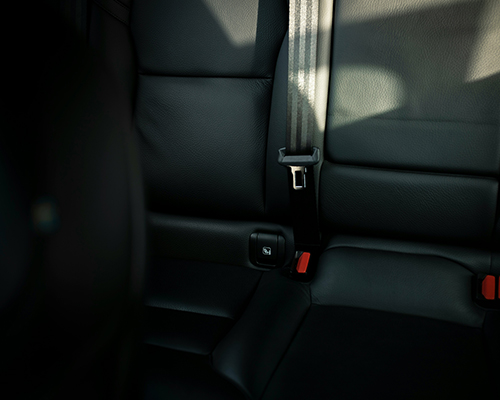
How A New Seat Belt is Set to Improve Accident Survival
10th Jul 2025
Read More -

Is The AirCar the Future of Mobility?
30th May 2025
Read More -

Top 12 Strangest Driving Laws From Around The World
25th Apr 2025
Read More -
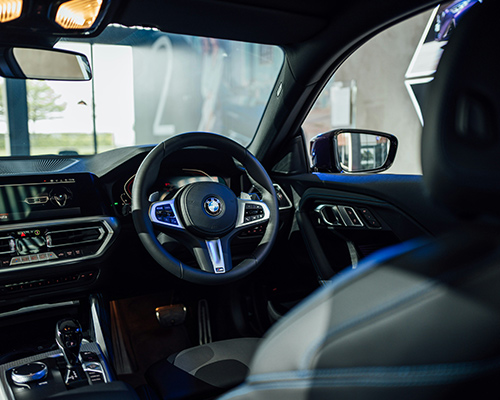
Over The Air Software Updates: What Are They and Do They Really Increase The Value of Your Car?
12th Mar 2025
Read More -

Ferrari's First Fully Electric Car: What We Know So Far
19th Feb 2025
Read More -

The Drive To Survive Phenomenon: How A Docuseries Transformed F1
15th Feb 2024
Read More -

What Is The Scandinavian Flick and How Do You Perfect It?
12th Oct 2023
Read More -

What Is Hypermiling and How Safe Is It?
13th Sep 2023
Read More -

What Is Trail Braking and Why Do Racing Drivers Use It?
14th Mar 2023
Read More

Autonomous Driving
The positive side to it all is that driving has never been safer as advances in vehicle design and manufacture have consistently reduced accidents despite the increase in traffic levels.
Modern vehicles are now equipped with a variety driver assist systems which help reduce the likelihood of collisions.
Lane Alerts warn drivers if they are drifting out of lanes; brake assist automatically applies the brakes if the vehicle detects an oncoming object and the driver does not react; and auto dimming headlights stop drivers being dazzled by high beams.
The road network hasn’t remained stationary either, with new developments and trials rolling out across the country.
Roundabouts will soon be using Intelligent Road Studs to reduce the number of collisions on them, and a new type of liquid speed bump could remove the need to slow down for them if travelling below the speed limit - only working on those travelling too fast.
As the UK struggles with a pothole epidemic there’s hope too that this problem can be almost eradicated, while at the same time helping to solve the mass waste plastic problem, by using plastic to repair damage and construct entire road surfaces.
In fact the motor industry seems determined to develop full driver autonomy, with numerous companies developing their own self driving technology. If their goal is realised it would trigger a revolution in how people view and use personal vehicles.
Safety levels would rise even further – quite drastically too. Currently the biggest obstacle to autonomous driving systems is dealing with the unpredictability of people. If the entire road network was made autonomous, vehicles would communicate with each other to eliminate collisions in almost every instance except system/mechanical failure.
Driver error is currently responsible for 90% of all vehicle crashes, meaning accidents would potentially drop by the same amount – putting it in line with bus/coach, rail and air travel, which all rank below one casualty for every billion kilometres travelled.

Electrification
Alongside the self-driving revolution, another development is taking place in the form of electric motors replacing combustion engines. Curiously most car manufacturers are pushing forward with these simultaneously despite the enormous pressure it must be placing on them financially.
It’s well known that self-drive technology can more easily control electric vehicles, which do away with the difficult to automate mechanical transmission.
Electric motors can generate enough torque to directly power the drive wheels, and any transmission they do employ will not need to be as expensive or heavy. With all the additional control and computational systems needed using more power it makes sense to use electricity as the power source – with any weight saving being reallocated to the heavy batteries.
An additional factor to this is the effect electric cars have on emission targets. Car manufacturers have strict limits imposed on them by the EU, and with the problems experienced by diesel fuelled cars emitting to much pollution, electrically powered vehicles will go a long to making up for the damage caused.
By developing and implementing their electric vehicle ranges as fast as possible the potential sales of these zero emission vehicles represent a way to avoid hundreds of millions of pounds in fines - while simultaneously paving the way for self-driving cars to take over from human drivers once the technology is properly developed.
Those who enjoy driving may not welcome either of these developments. Electric vehicles drive and feel very different to those powered by combustion engines, with a big complaint from driving enthusiast being the quiet and almost sterile nature of electric vehicles.
Indeed, it is true that the noise of a combustion engine is an important and maybe even crucial element to the experience, which is not lost on car manufacturers who spend a lot of time and money making sure this sound is perfect.
Electric vehicles do have their own advantages, one being the afore mentioned high torque – providing neck snapping acceleration if wanted. Whether this would be enough to persuade hardcore fans is up for debate, but there’s no doubt an electric vehicle could toast a combustion powered one off the line.
Of course it may all be a moot point if a fully autonomous road network is realised, then no-one would be driving at all except for perhaps in specific circumstances.
Whether electric vehicles do it themselves or the shift to autonomous driving is the final reason, the likely fate and future of internal combustion engines is to be restricted to leisure and sporting uses.

Motorsport
Motorsport is big business and will be affected drastically by these changes. Once electric vehicles become fully common place, internal combustion powered vehicles would mostly become classic cars, to be tinkered with as they age and degrade.
Some would still find niches to operate in, possibly where extreme range is needed and recharging is difficult. Mostly they will be owned by enthusiasts that can afford to own a second car, taking them out for a spin at the weekends, on the road or the track.
Motorsports will still cater for them, but it will surely be in an increasingly reduced capacity as electrification takes hold - but how motorsport as a whole handles the change is an unknown that can only be speculated on.

Formula 1
Formula One is facing uncertain times ahead. Because the technology developed through F1 racing is subsequently used in the production vehicles of the manufacturers, electrification presents the sport with a problem – combustion engines and drive trains would no longer be relevant to that.
The financial implications to the major manufacturers cannot be ignored, and at a minimum would restrict their research and development budgets as the new developments would matter less and less as vehicle types continue to diverge over time.
How then could the sport claim to be the pinnacle of motorsport if it’s using older technology which isn’t even being used in the new generation of production models. Quite simply, it couldn’t.
The sport’s governing body, the FIA, recently took the step of introducing hybrid engines into F1, but their more understated noise was been so poorly received that they were presented with a clear choice: Electric power and the technological development that comes with it, or combustion engines and the spectacle and sport itself. They’ve swung back to the latter.

Formula E
Formula E already exists and at the moment is not seen as a serious competitor to F1. But with F1 audiences suffering a decline in recent years, as electrification picks up pace it could become one.
If F1 did decide to stick with combustion engines it’s a very real possibility that Formula E could well eclipse it given enough time, as it becomes more relevant and attractive to new audiences - something which it is already doing with alternative thinking.
Knowing full well it can’t yet rival F1, it is doing everything it can to be as accessible as possible to new audiences. Single day race events set on street courses in easy to reach locations means anyone slightly curious can easily access the sport.
Formula E has also made efforts to keep operating costs low for teams, with a half stock half developed approach to the technology levels. Because of this it has attracted some big manufacturers in Audi and Jaguar, who are using the sport as a test bed for their new Electric Vehicle tech – exactly like F1 teams do now for combustion engines.
The half stock approach also has the added benefit of tightening the gap between first and last, placing more emphasis on driver ability. Combined with the inherently higher torque and acceleration of EVs it makes for very exciting races – with far more action in terms of overtaking and wheel to wheel battling.
By sowing the seeds with audiences now, they are well placing themselves to be a serious alternative when the time comes for the people to decide which type of motorsport will reign supreme.
Alternatively the sports could merge when the time is right - as fans become more accustomed to the quieter noise levels and F1 bites the bullet on its financial future.

NASCAR
NASCAR would probably maintain the use of combustible engines, despite the efforts that have already made to increase the appeal of the sport by improving fuel efficiency and decreasing emission levels.
Because NASCAR already limits the level of technology used in the stock cars so heavily, it is not imperative for teams to keep up with the newest technological advances - they only switched from carburettors to fuel injection systems in 2012.
Stock cars are already basic by modern standards, the fans love the raw power of the V8 engines and the focus on driver ability – turning those drivers into huge celebrities.
The noise of 40 odd stock cars doing 200mph on an oval track surrounded by tiers of up to 250,000 screaming fans is as much a part of the sport as anything else. It is very unlikely the fans would be willing to tolerate losing that part of the experience.
If other motorsports did switch over to electric power, NASCAR could well benefit from the decreased numbers of combustion powered motorsport events competing with it, attracting those fans wanting to stick with combustible fuelled racing.

Rally Racing
Rally Racing is looking at a full implementation but is adopting it with a two stage approach. The established dominant version of the sport - the World Rally Championship (WRC) - has stated there be no implementation of electric power sources for the next 5 years. But the more recent World Rallycross Championship (World RX) has boldly stated they will be entirely electric powered within 5 years.
Rally racing is an extremely difficult racing discipline to switch to electric power from a technical stand point, with the demands on the drive train being immense. Because World RX runs on a much shorter and less demanding race format, it makes sense to use that part of the sport as the test bed for the electric switch before doing the same to the extremely gruelling WRC.

Motorbikes
Motorbikes aren’t being left behind either. Electric powered bike races are already happening alongside traditional events and again as the process continues it’s likely the switch will happen. Even Harley Davidson is bringing an electric bike to market with the next 18 months.
Of all the other myriad types of motor racing, their future will be determined by their popularity. If enough fans continue to demand particular niches of motorsport and support them, they could survive - but there will almost certainly be extensive changes as new categories emerge and others die off.

New World, New Way
Whichever way you look at it the world has always changed, and progression leaves little room for nostalgia - which is left to us to feel and act upon.
Nostalgia is a powerful thing, and is harnessed relentlessly by advertisers to sell you the things you grew up with. No matter how good or better the next new thing may be, the power of nostalgia will always say to you it wasn’t quite as good as the one you had all those years ago – because we tend to forget the bad bits and only remember the good parts.
It won’t be entirely the same with autonomous driving and electric vehicles, the change seems a bit too big to be seen like that. The shift will happen gradually to soften the loss, but for those who really enjoy driving being chauffeured around can doubtfully be considered as being the same thing only a little different.
But count your blessings where you can - electric vehicles could help save the world as we know it, or least move us in the right direction. Unless you’re Donald Trump and his EPA, the world pretty much agrees that we’re reaching the tipping point for how much damage our planet can sustain before something bad (worse) happens.
If switching your Turbo Diesel engine for the equivalent electric motor can stop that from happening, is it really such a big deal that it's worth risking the consequences of inaction for? Perspective, as always, is crucial.
MAT FOUNDRY GROUP ARE A LEADING MANUFACTURER OF GREY AND DUCTILE IRON CAR COMPONENTS. TO LEARN MORE ABOUT US VIEW OUR PRODUCTS OR CONTACT US TODAY

News and blogs
-

Glorious Goodwood: The Need for Speed
1st Aug 2025
Read More -

How A New Seat Belt is Set to Improve Accident Survival
10th Jul 2025
Read More -

Is The AirCar the Future of Mobility?
30th May 2025
Read More -

Top 12 Strangest Driving Laws From Around The World
25th Apr 2025
Read More -

Over The Air Software Updates: What Are They and Do They Really Increase The Value of Your Car?
12th Mar 2025
Read More -

Ferrari's First Fully Electric Car: What We Know So Far
19th Feb 2025
Read More -
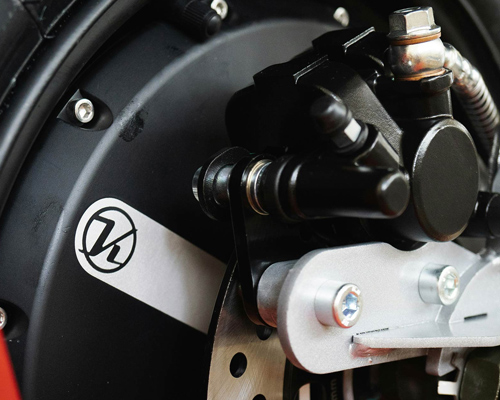
The Future of Brake Calipers: Innovations and Trends
27th Jan 2025
Read More -
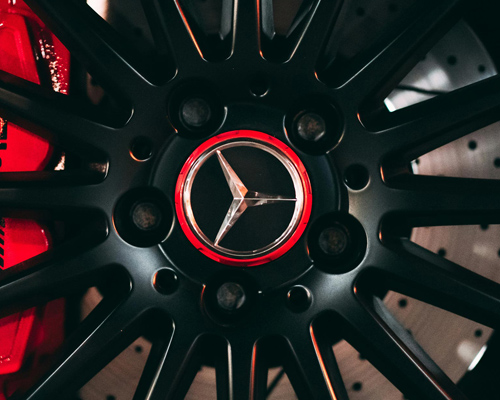
How Often Should You Replace Your Brake Calipers?
27th Jan 2025
Read More -
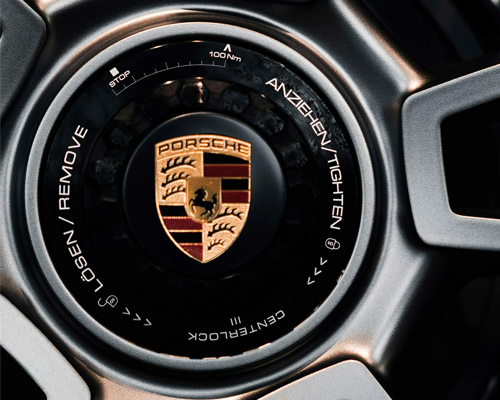
How to Choose Brake Calipers for High-Performance Vehicles
27th Jan 2025
Read More -

Best Brake Calipers for SUVs and Trucks
27th Jan 2025
Read More




